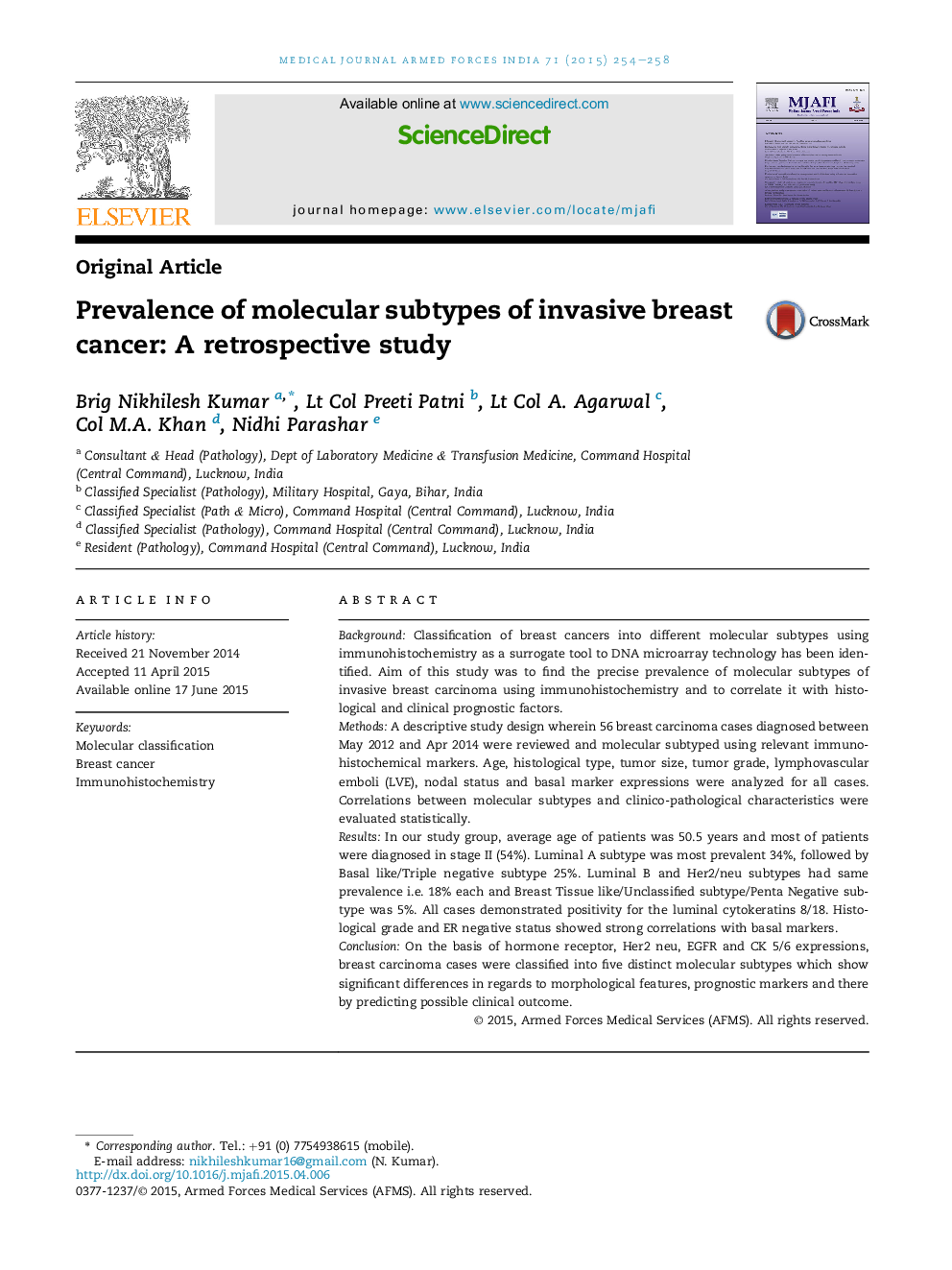| Article ID | Journal | Published Year | Pages | File Type |
|---|---|---|---|---|
| 3160940 | Medical Journal Armed Forces India | 2015 | 5 Pages |
BackgroundClassification of breast cancers into different molecular subtypes using immunohistochemistry as a surrogate tool to DNA microarray technology has been identified. Aim of this study was to find the precise prevalence of molecular subtypes of invasive breast carcinoma using immunohistochemistry and to correlate it with histological and clinical prognostic factors.MethodsA descriptive study design wherein 56 breast carcinoma cases diagnosed between May 2012 and Apr 2014 were reviewed and molecular subtyped using relevant immunohistochemical markers. Age, histological type, tumor size, tumor grade, lymphovascular emboli (LVE), nodal status and basal marker expressions were analyzed for all cases. Correlations between molecular subtypes and clinico-pathological characteristics were evaluated statistically.ResultsIn our study group, average age of patients was 50.5 years and most of patients were diagnosed in stage II (54%). Luminal A subtype was most prevalent 34%, followed by Basal like/Triple negative subtype 25%. Luminal B and Her2/neu subtypes had same prevalence i.e. 18% each and Breast Tissue like/Unclassified subtype/Penta Negative subtype was 5%. All cases demonstrated positivity for the luminal cytokeratins 8/18. Histological grade and ER negative status showed strong correlations with basal markers.ConclusionOn the basis of hormone receptor, Her2 neu, EGFR and CK 5/6 expressions, breast carcinoma cases were classified into five distinct molecular subtypes which show significant differences in regards to morphological features, prognostic markers and there by predicting possible clinical outcome.
